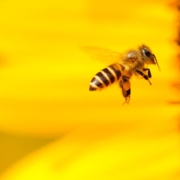EPA Releases Final Biological Evaluations of Carbaryl and Methomyl’s Impacts on Endangered Species
This original announcement was published by the EPA on March 31, 2021. Click here for more.
EPA is taking the next step in its regulatory review of carbaryl and methomyl, two insecticides used on a variety of food and feed crops. Carbaryl is also registered for residential uses, in areas like home gardens and lawns.
After carefully considering public comments on the draft biological evaluations (BEs) for carbaryl and methomyl, today, EPA is releasing its final BEs, which find that these insecticides are “likely to adversely affect” a number of threatened and endangered species and their designated critical habitats.
Since the findings of the BEs include potential adverse effects on listed species, EPA will need to engage in formal consultation with the U.S. Fish and Wildlife Service and the National Marine Fisheries Service (the Services) to further study these potential impacts and possibly propose mitigation measures for vulnerable species. EPA’s final BEs are being submitted to the Services to begin this process. EPA is also considering additional mitigation measures, including prioritizing mitigation measures for certain vulnerable species while in consultation with the Services.
Biological evaluations are the beginning of EPA’s Endangered Species Act consultation review process for pesticides. EPA followed its March 2020 Revised Method for National Level Listed Species Biological Evaluations of Conventional Pesticides to conduct this biological evaluation. In order to make its “likely to adversely affect” determination, EPA evaluated whether an individual of a listed species is “reasonably expected” to be exposed to the pesticide at a sufficient level that it will have an effect, and whether that effect will be adverse.
The Services will use this information to develop their biological opinions to determine if the pesticides jeopardize the continued existence of any of the listed species and whether there is adverse modification to their critical habitats. If jeopardy or adverse modification is determined, the Services, with input from EPA and the registrants, will propose protection measures as appropriate. Protection measures would be designed to reduce potential harm to listed species or their critical habitat.
To read the biological evaluations, please visit our webpage.





